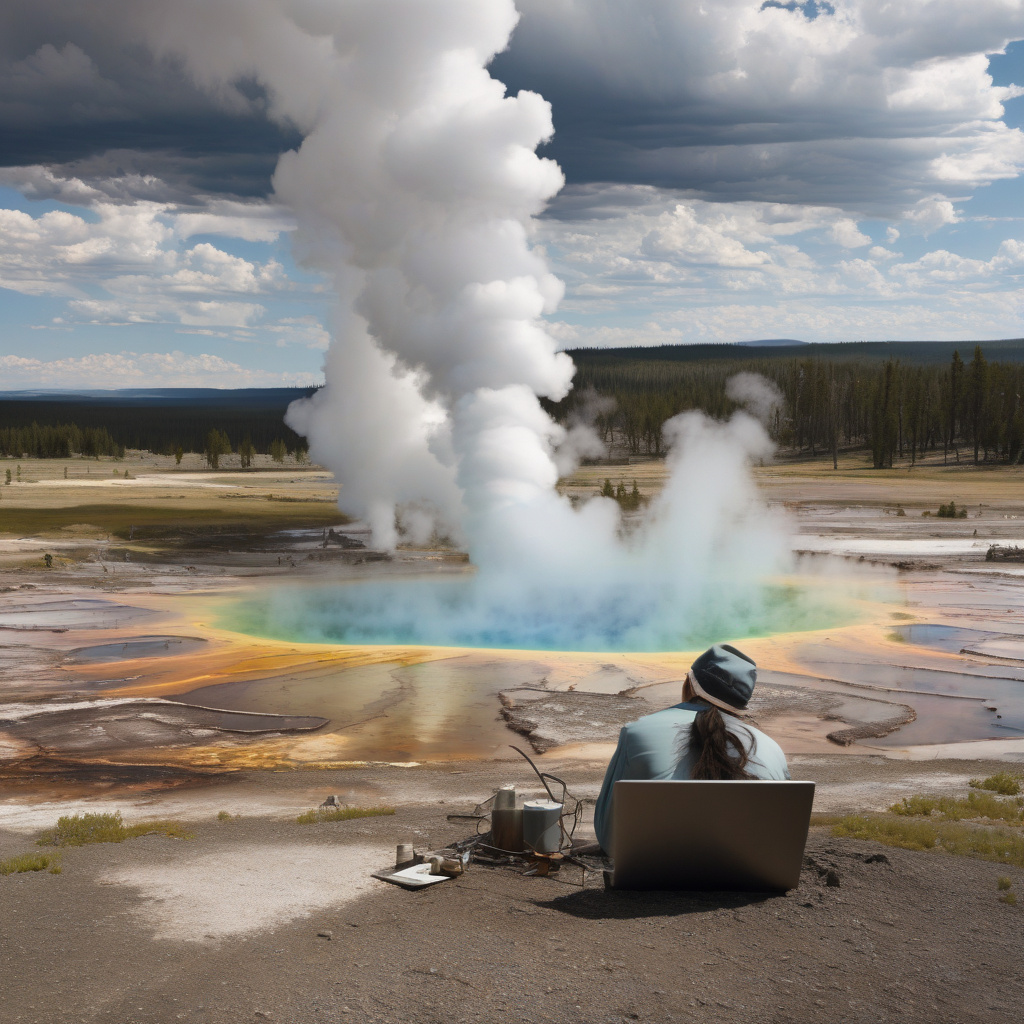Study Based on Machine Learning Expands Yellowstone Earthquake Record by 10 Times
The Yellowstone Caldera, spanning Wyoming, Idaho, and Montana, is among the most seismically active volcanic regions in the United States. The area is known for its geothermal features, including geysers and hot springs, which attract millions of visitors each year. However, beneath the surface lies a complex network of faults and fractures that have the potential to unleash catastrophic earthquakes.
A recent study conducted by a team of researchers has shed new light on the earthquake activity in the Yellowstone region. By harnessing the power of machine learning, the researchers were able to expand the existing earthquake record by a staggering 10 times. This breakthrough has provided valuable insights into the seismicity of the area, helping scientists better understand the underlying processes that drive earthquake activity in the region.
Machine learning algorithms have revolutionized the way researchers analyze and interpret large datasets, and the Yellowstone study is a prime example of the technology’s potential. By training their algorithms on existing earthquake data and seismological records, the researchers were able to detect subtle patterns and correlations that had previously gone unnoticed. This enabled them to identify and catalog thousands of previously undocumented earthquakes, some of which dated back several decades.
One of the key findings of the study was the discovery of numerous small-magnitude earthquakes that had previously been missed by traditional seismological methods. While these events may not pose an immediate threat to public safety, they provide valuable information about the underlying fault structures and stress distribution in the region. This information is crucial for assessing the potential risk of larger, more damaging earthquakes in the future.
In addition to expanding the earthquake record, the study also revealed important insights into the behavior of the Yellowstone Caldera. By analyzing the spatiotemporal distribution of earthquakes, the researchers were able to identify clusters of seismic activity that corresponded to known fault lines and geothermal areas. This information will help scientists better understand the dynamics of the caldera system and improve their ability to forecast and mitigate earthquake hazards in the region.
The implications of this study extend beyond the Yellowstone region. By demonstrating the power of machine learning in earthquake research, the researchers have paved the way for similar studies in other seismically active areas around the world. This technology has the potential to revolutionize our understanding of earthquake processes and improve our ability to assess and manage earthquake risks in the future.
As we continue to harness the power of machine learning and other advanced technologies, our ability to monitor and study earthquake activity will only continue to improve. The Yellowstone study serves as a testament to the potential of these tools to expand our knowledge of the natural world and enhance our ability to protect vulnerable communities from the devastating effects of earthquakes.
In conclusion, the study based on machine learning that expanded the Yellowstone earthquake record by 10 times represents a significant advancement in our understanding of seismic activity in the region. By uncovering thousands of previously undocumented earthquakes and providing new insights into the behavior of the Yellowstone Caldera, this research has opened up exciting possibilities for future earthquake studies. As we look to the future, it is clear that machine learning will play a key role in advancing our knowledge of earthquakes and improving our ability to mitigate their impact on society.
Yellowstone, Earthquake, Machine Learning, Seismic Activity, Research.












